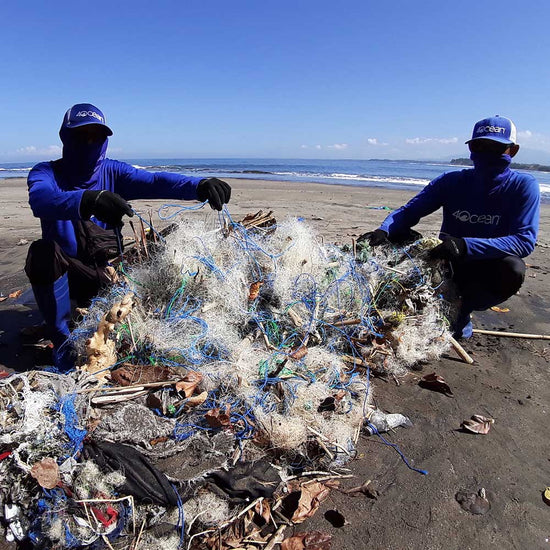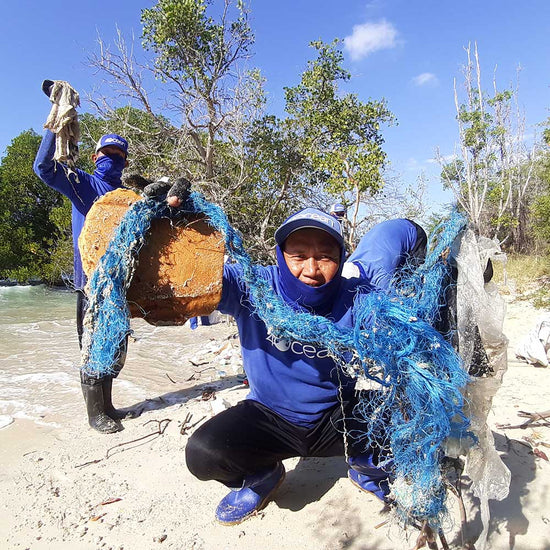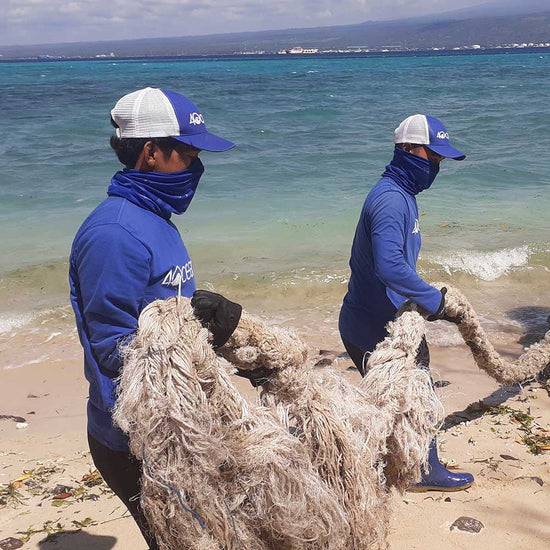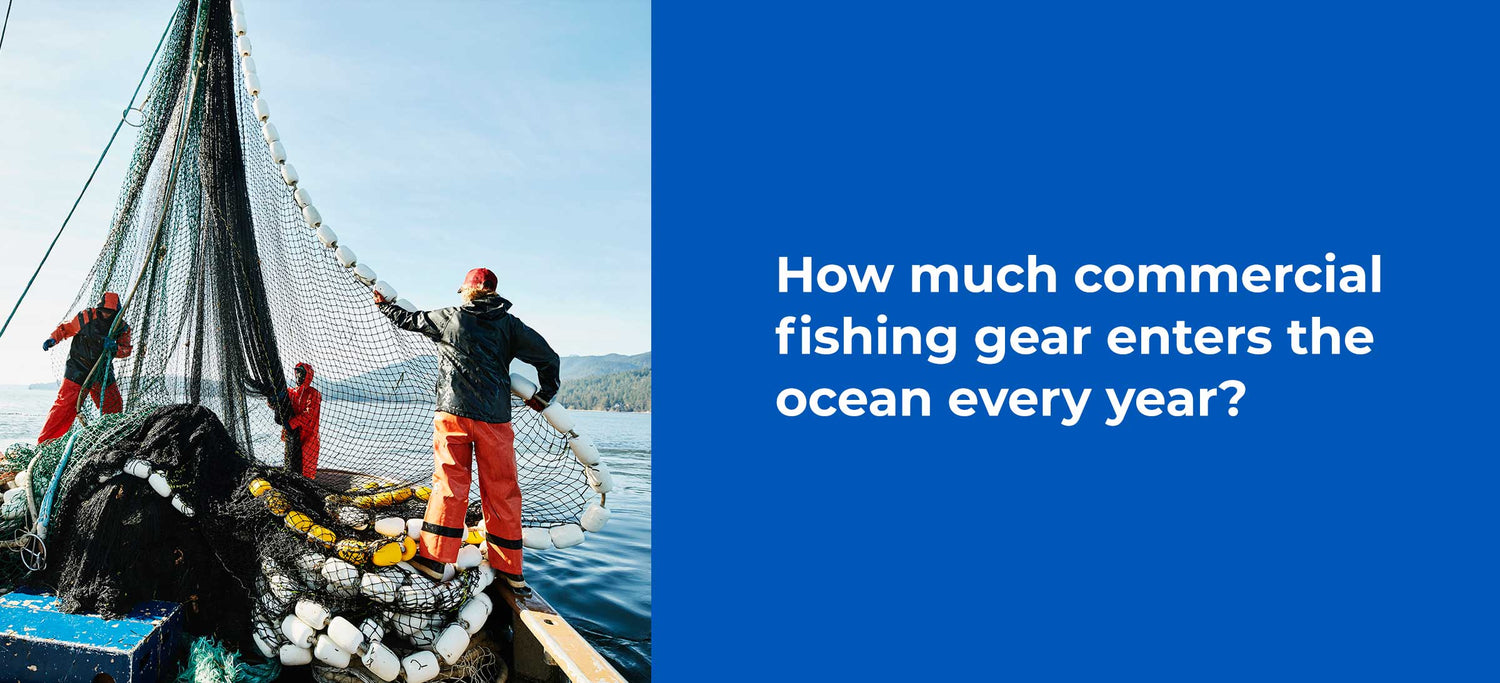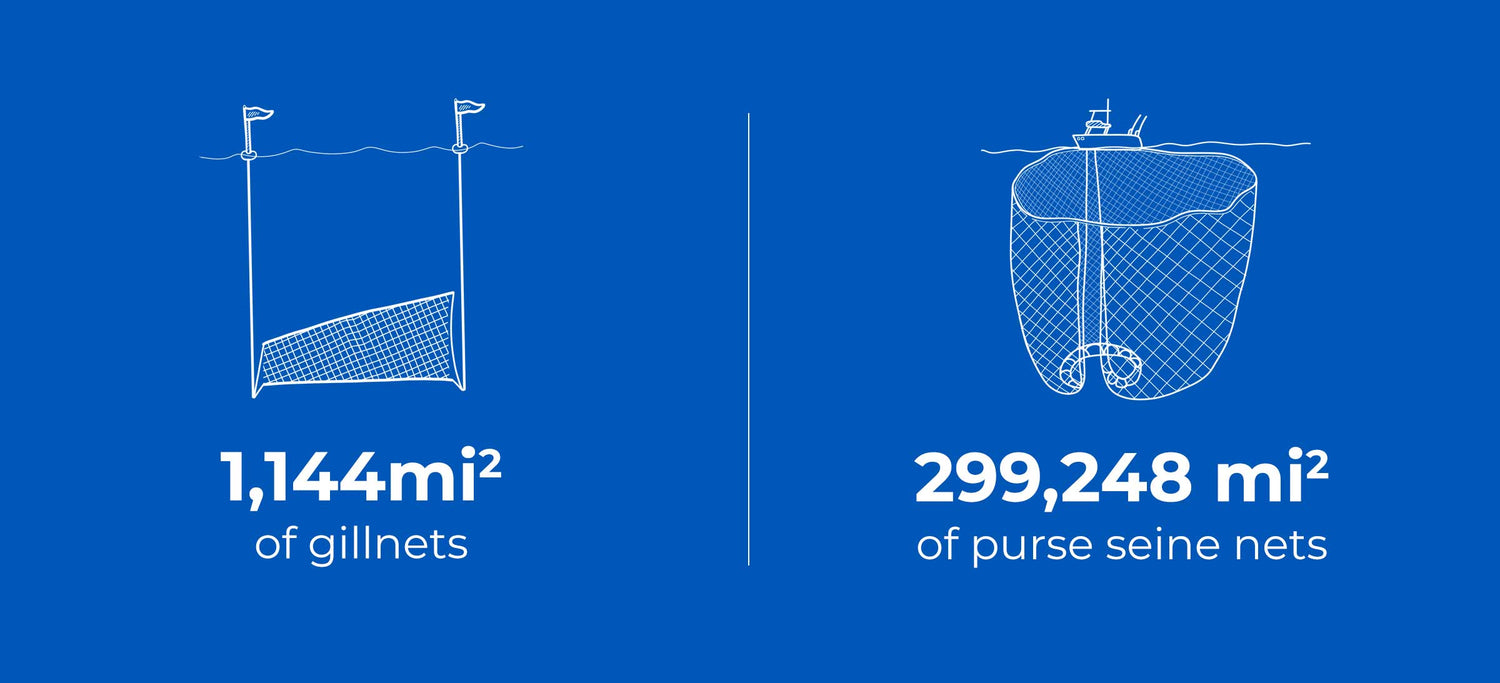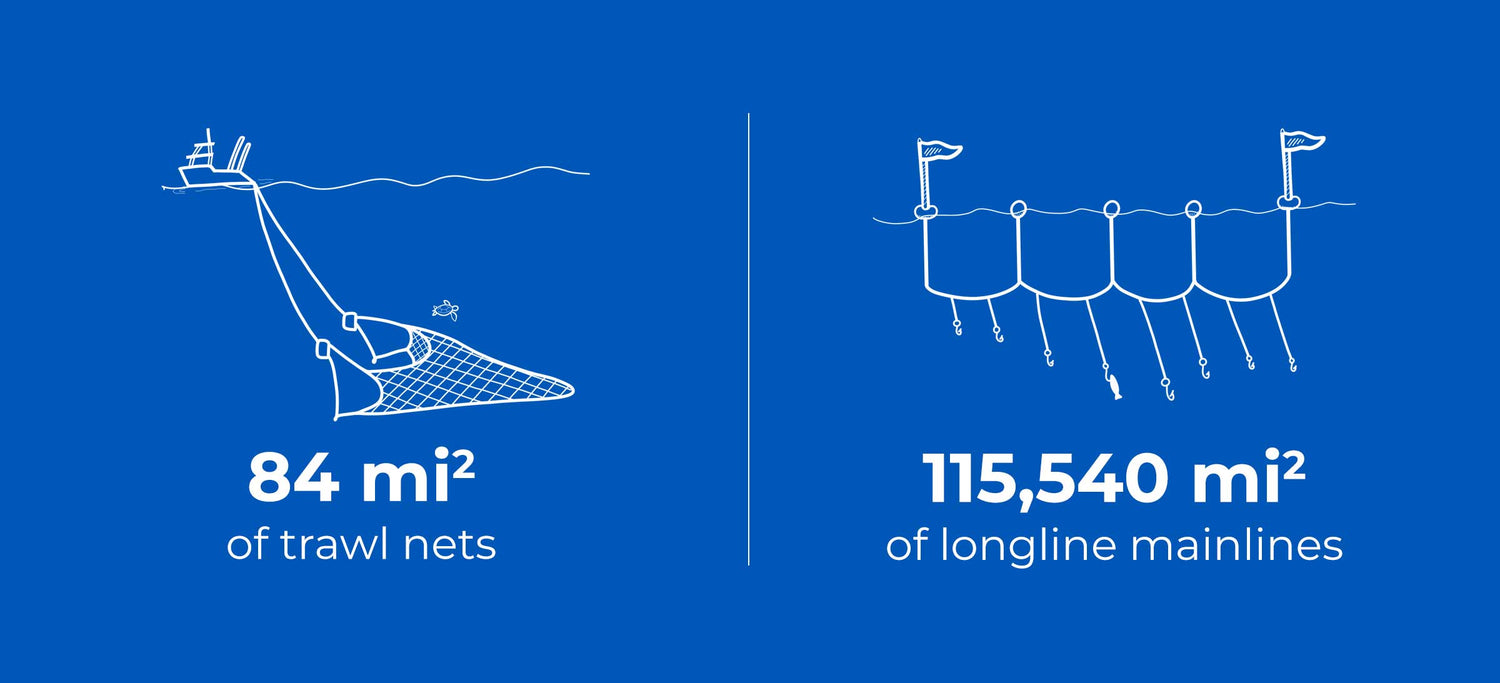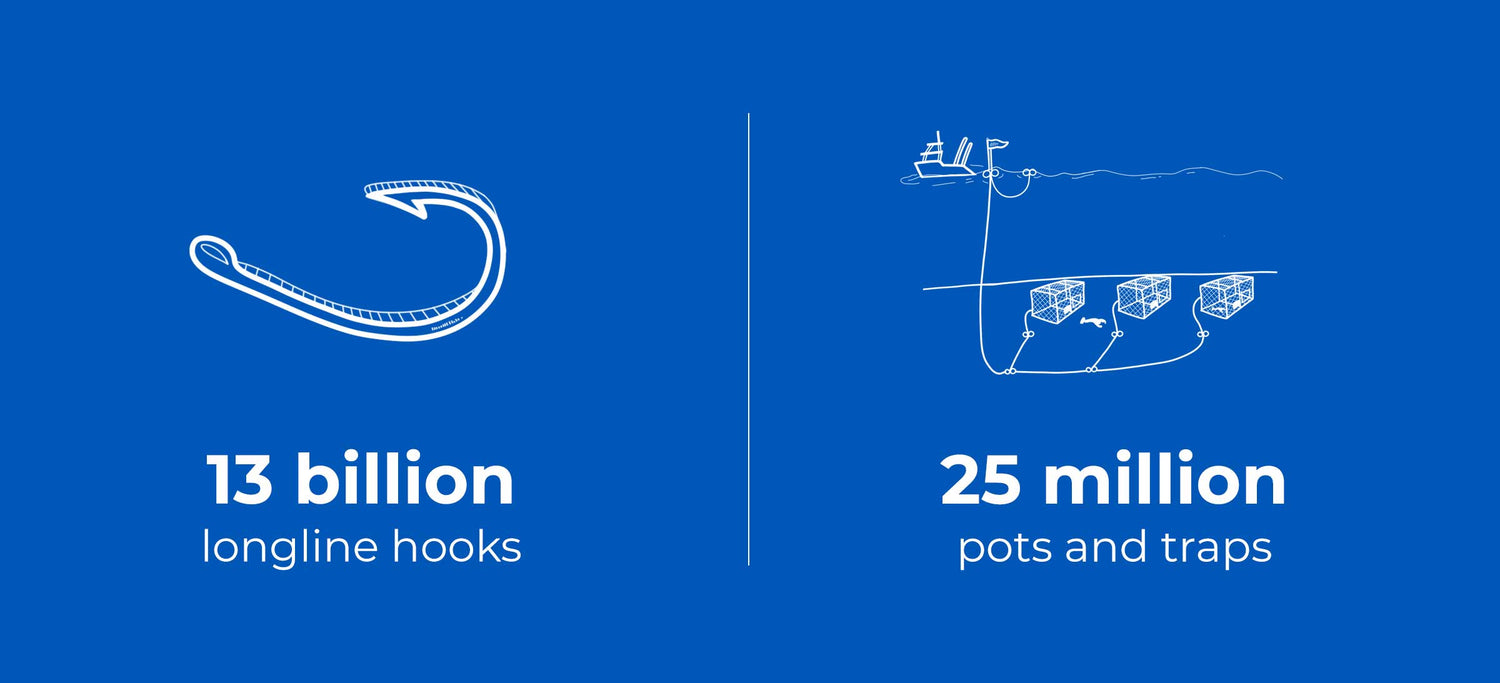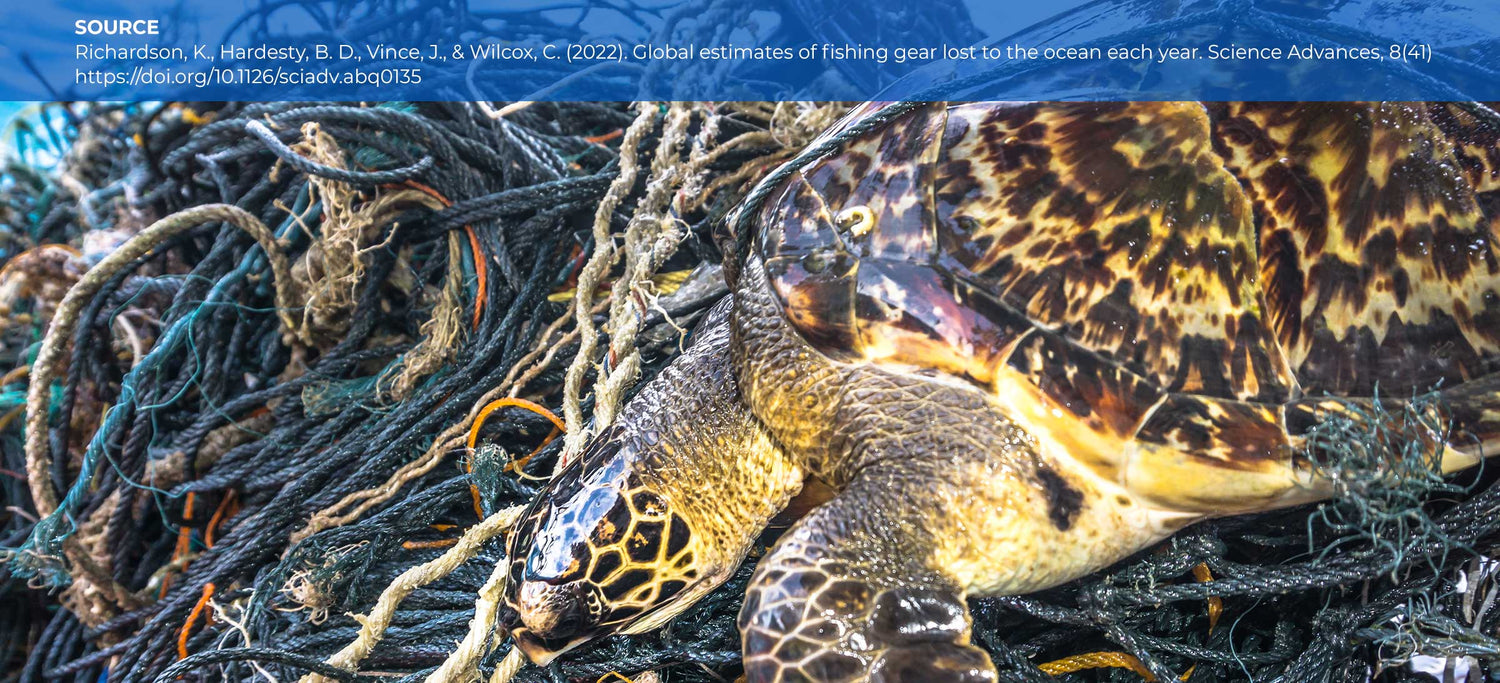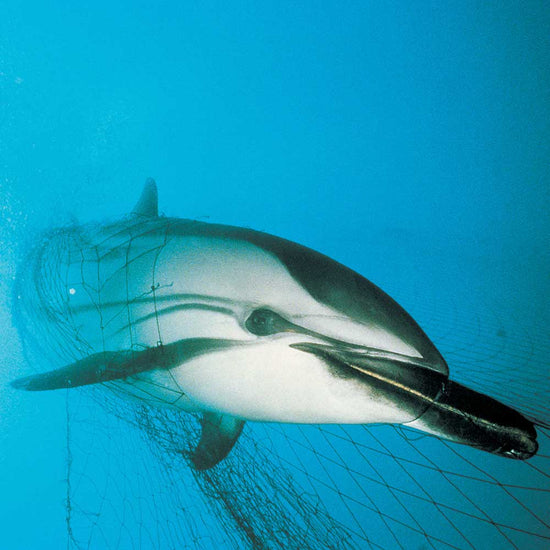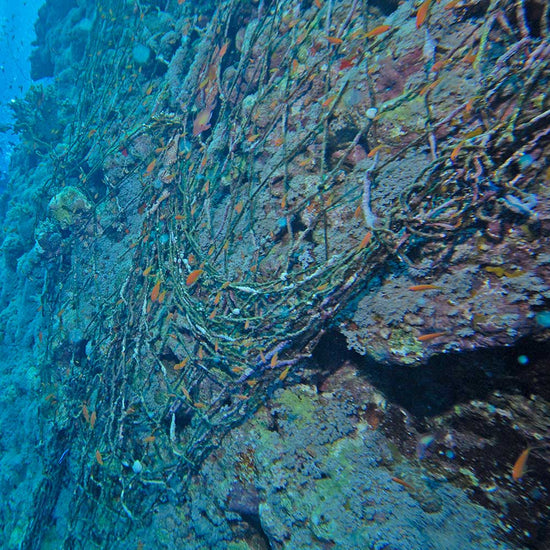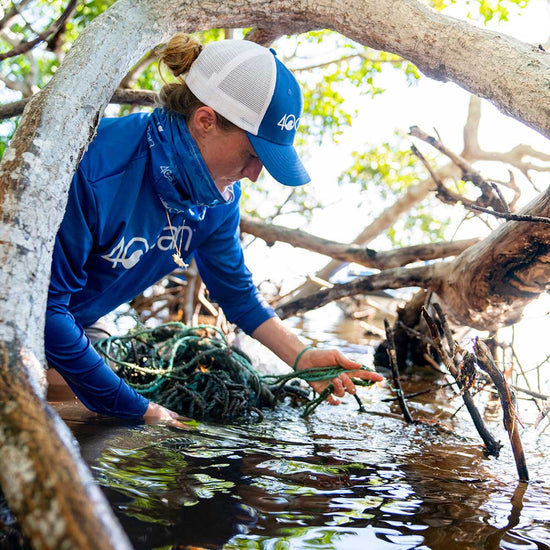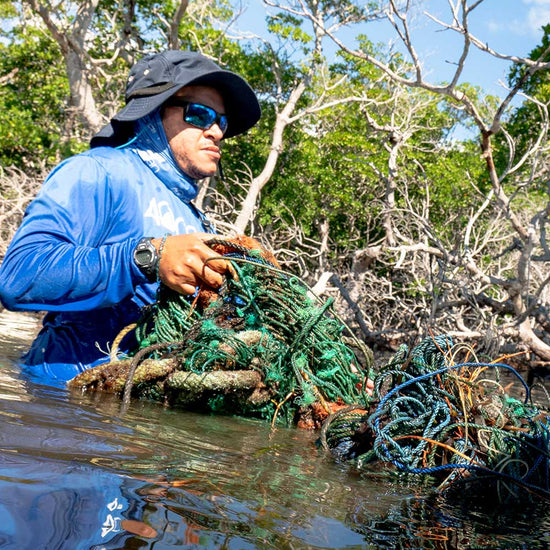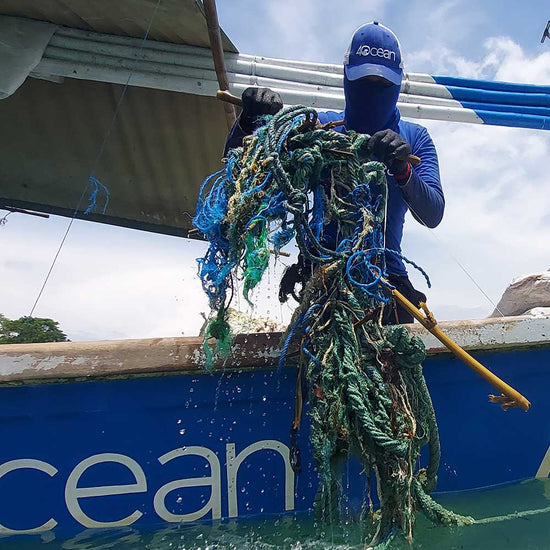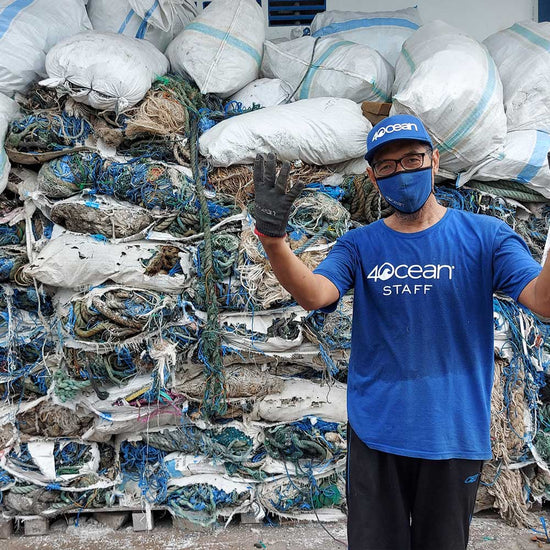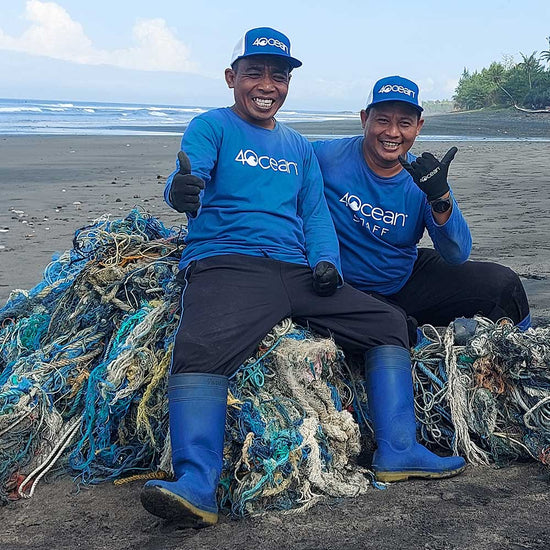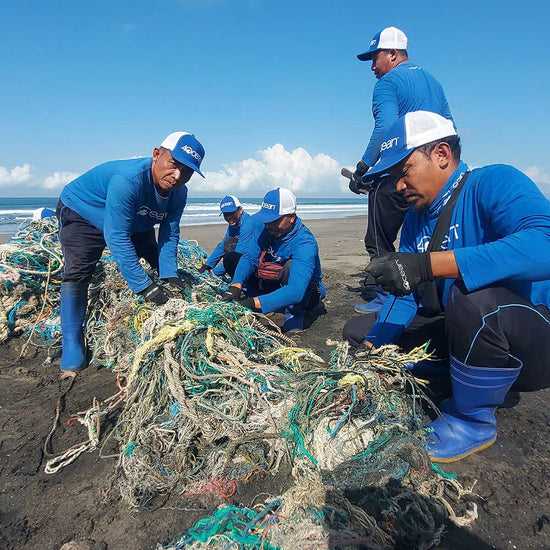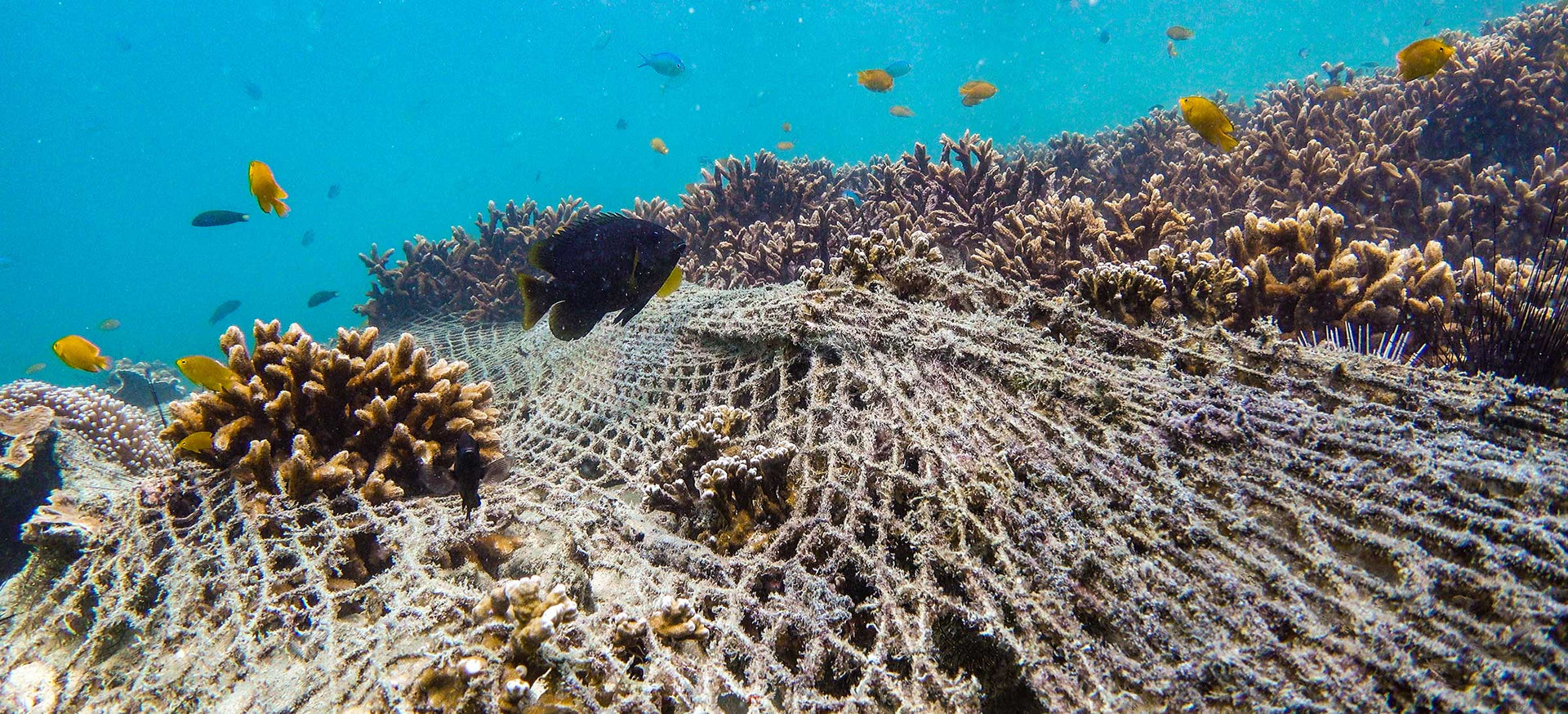
Ghost fishing nets are the deadliest type of plastic pollutions in our oceans
Abandoned, lost, and discarded fishing gear, called ALDFG or “ghost gear” for short, is the deadliest type of plastic pollution in our oceans today—and human intervention is the only way to get them out.
3 ways you can help right now
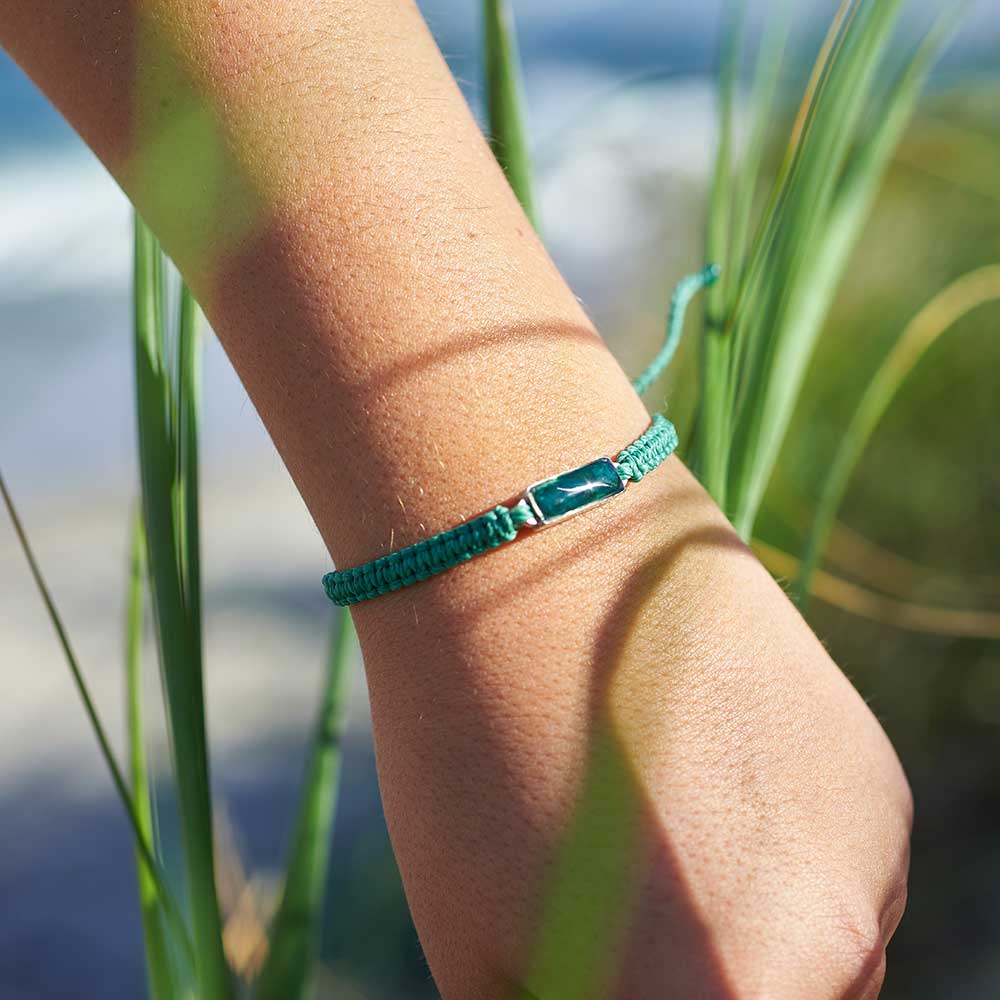
1. Order our Ghost Net Bracelet
Made with actual pieces of ghost net recovered by our professional, full-time captains and crews, our Ghost Net Bracelet funds the removal of ghost fishing gear from our oceans and helps raise awareness about its impacts on marine life.
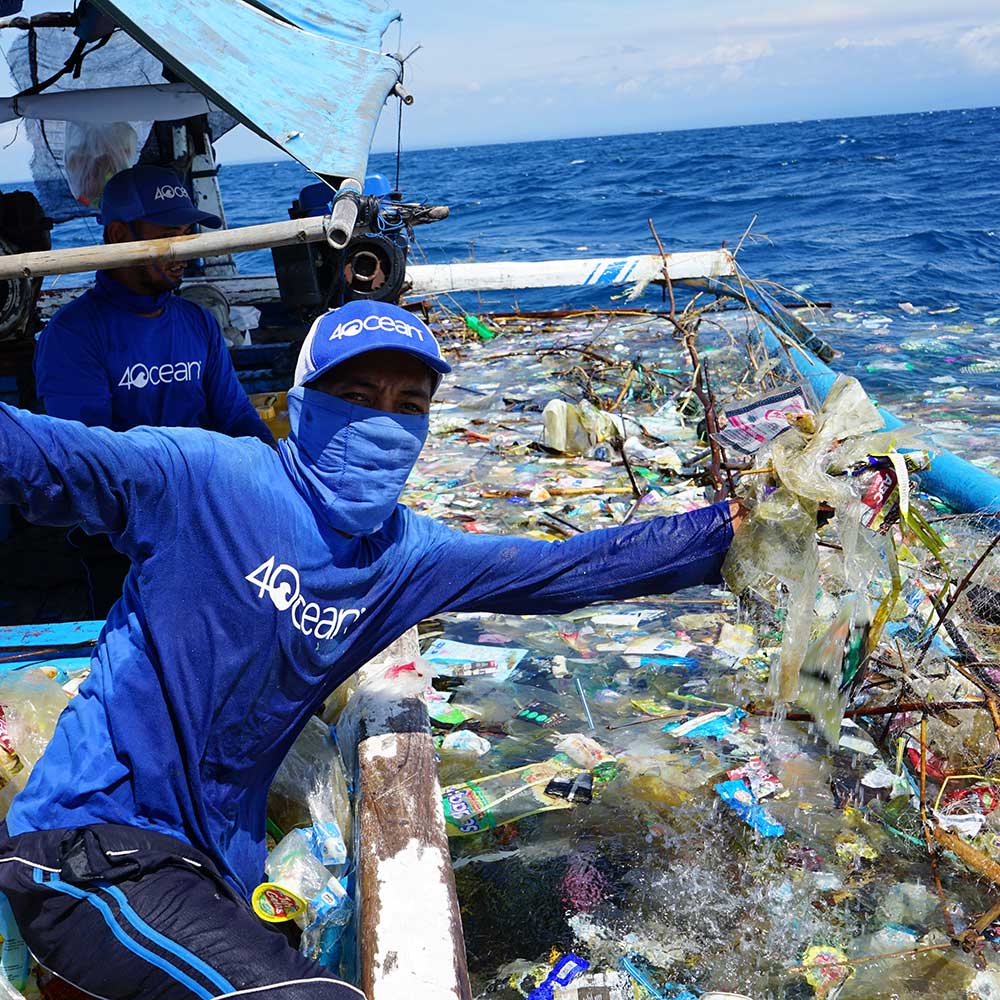
2. Go plastic neutral
If you’re like most people, you use about nine pounds of single-use plastic every month. Offset the impact of the plastics you can’t avoid by recovering an equal amount of trash from our oceans each month. Plans start as low as $10/month!
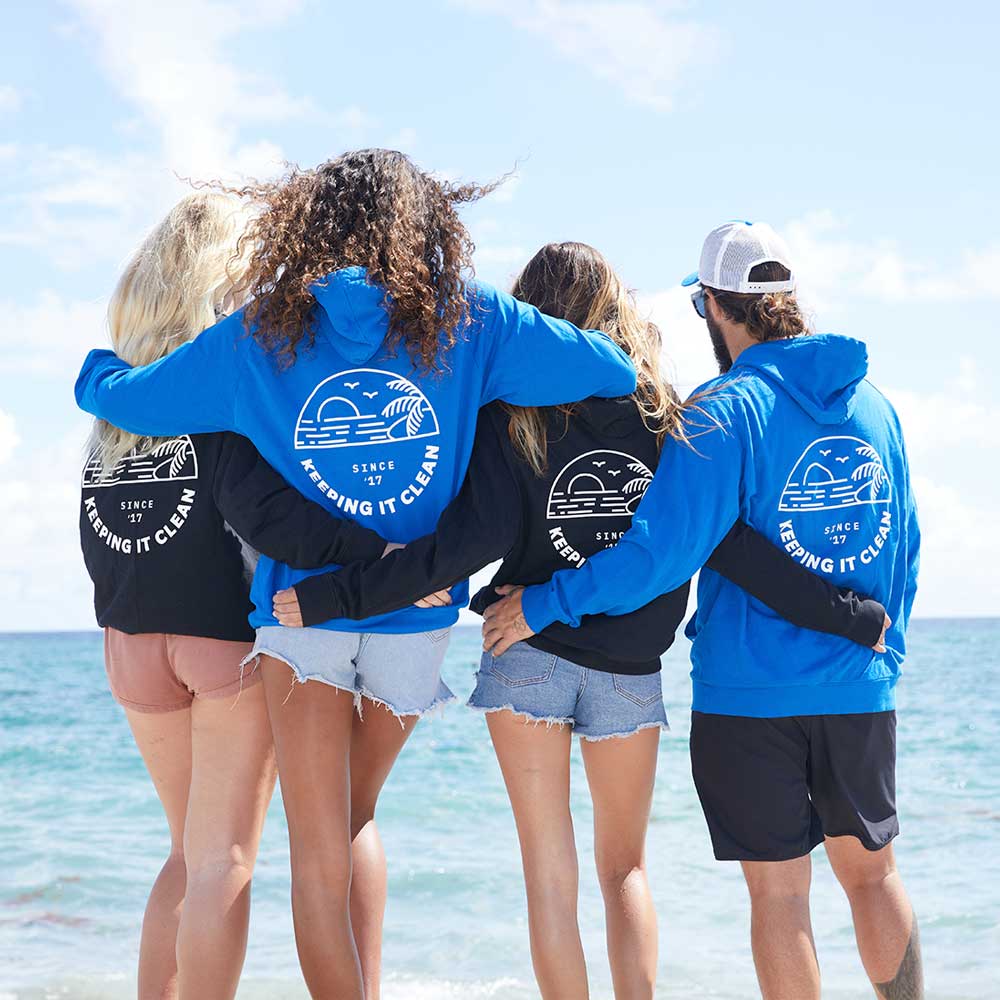
3. Stay connected
Not ready to buy? Discover more ways to support our mission to end the ocean plastic crisis when you sign up for email alerts.
Ghost Nets: The Silent Killers in Our Oceans
How active fishing gear becomes ghost gear
More than 100 million pounds of commercial fishing gear is abandoned, lost, or discarded into the ocean every year.
Abandoned, lost, and discarded fishing gear (ALDFG for short) includes everything from 10,000-pound fishing nets to miles-long fishing lines as well as hooks, buoys, traps, and dredges.
Some gear is lost accidentally, either swept away during a storm, cut loose by other maritime traffic, or torn away when it’s snagged on rocks, coral, or other debris on the seafloor.
And some is lost on purpose. For instance, old and worn out gear may be cut free or tossed overboard when there are no disposal facilities available. It may also be cut loose to hide evidence of illegal, unregulated, and unreported (IUU) fishing activity.
Often called “ghost gear” because it continues to fish long after humans lose control of it, ALDFG is the deadliest type of plastic pollution in our oceans today—and human intervention is the only way to get it out.
Ghost gear never stops fishing
Unlike other types of plastic pollution, fishing gear is intentionally designed to catch and kill marine life. And because it’s plastic, it won’t biodegrade like a leaf becomes soil. So even when it’s lost at sea and completely outside human control, it never stops fishing.
Ghost fishing impacts many vulnerable and endangered animals including sea turtles, seals, whales, dolphins, corals, seabirds, sharks, and other fish. In fact, fishing gear entanglements are so widespread that they’re now the leading cause of serious injury and death for large whales.
Ghost gear can also smother seagrass beds and break, shade, and abrade coral, which prevents healthy growth and introduces diseases, all of which makes these critical marine ecosystems extra vulnerable to other threats like climate change.
Some organizations have tried to estimate how many animals are lost to ghost fishing each year, but the unfortunate truth is that most of these tragedies happen in the open ocean where they cannot be observed or documented by humans.
While the true magnitude of ghost fishing will likely remain hidden beneath the ocean’s surface, we already know that urgent and immediate action is required to protect our wildlife and address this global issue.
Ghost fishing threatens global food security and the blue economy
Ocean-based industries like fishing and tourism employ approximately three billion people around the world and contribute several trillion dollars in goods and services to the global economy every year.
Seafood is also the primary source of protein for over a third of the world’s population, which makes sustainable fishing critical to global food security.
Ghost gear can create unnecessary competition within a fishery, either by catching and killing commercially valuable species or by getting tangled in active fishing gear, all of which contributes to smaller harvests.
ALDFG can also create serious navigational hazards for both local and commercial fishermen. While some debris floats, the main mass is often hidden just below the surface, much like an iceberg.
Vessels that collide with ghost gear accumulations can sustain serious damage. Ghost gear can break off the rudder, get tangled in the propellers, and even damage the engine. In extreme situations, it can actually cause a vessel to sink.
Hot spots for ghost gear
Ghost gear is a global problem that impacts fishing communities and wildlife all around the world. However, ocean currents cause accumulations of ghost gear that impact some areas more severely than others.
For example, the Hawaiian archipelago sits just south of the North Pacific Gyre, a swirling ocean current that’s home to the largest marine debris accumulation in the world—the Great Pacific Garbage Patch.
The GPGP is brimming with plastic waste from communities in and around the Pacific Ocean including North America, South America, and Asia.
Because of its proximity to the GPGP, Hawaiʻi receives a lot of floating marine debris on its windward side, with most accumulations found to the north and east.
Ghost gear actively harms and sometimes kills Hawaiʻi’s endangered wildlife, including Hawaiian monk seals, green and hawksbill sea turtles, as well as several native seabirds that frequent Hawaiʻi’s shores.
Most of the ghost gear washing up here is not used in Hawaiʻi’s commercial fisheries; it comes from other fisheries in the Pacific Ocean, proving once again that plastic pollution anywhere is a problem everywhere.
Help us get these death traps out of our oceans!
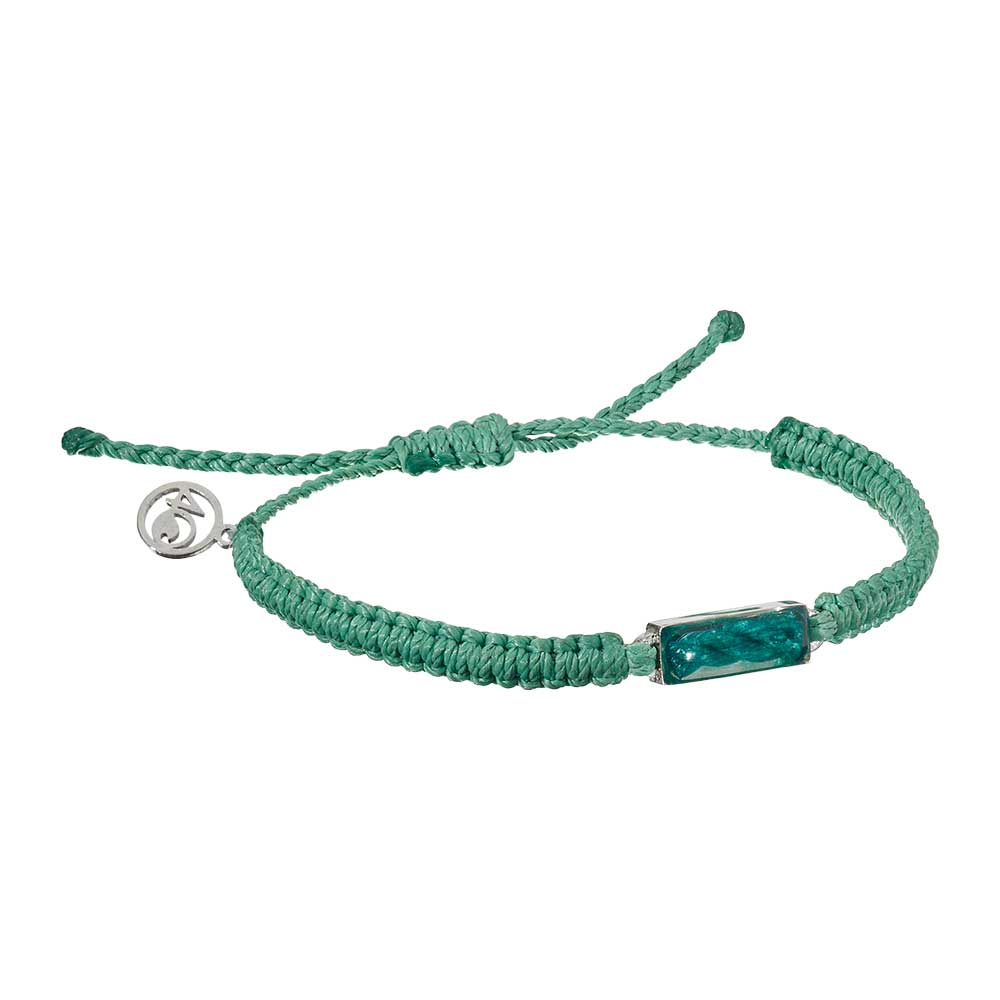
Ghost Net Awareness Bracelet
By purchasing this bracelet, you will fund the removal of ghost nets and other harmful, man-made debris from the world’s oceans, rivers, and coastlines.
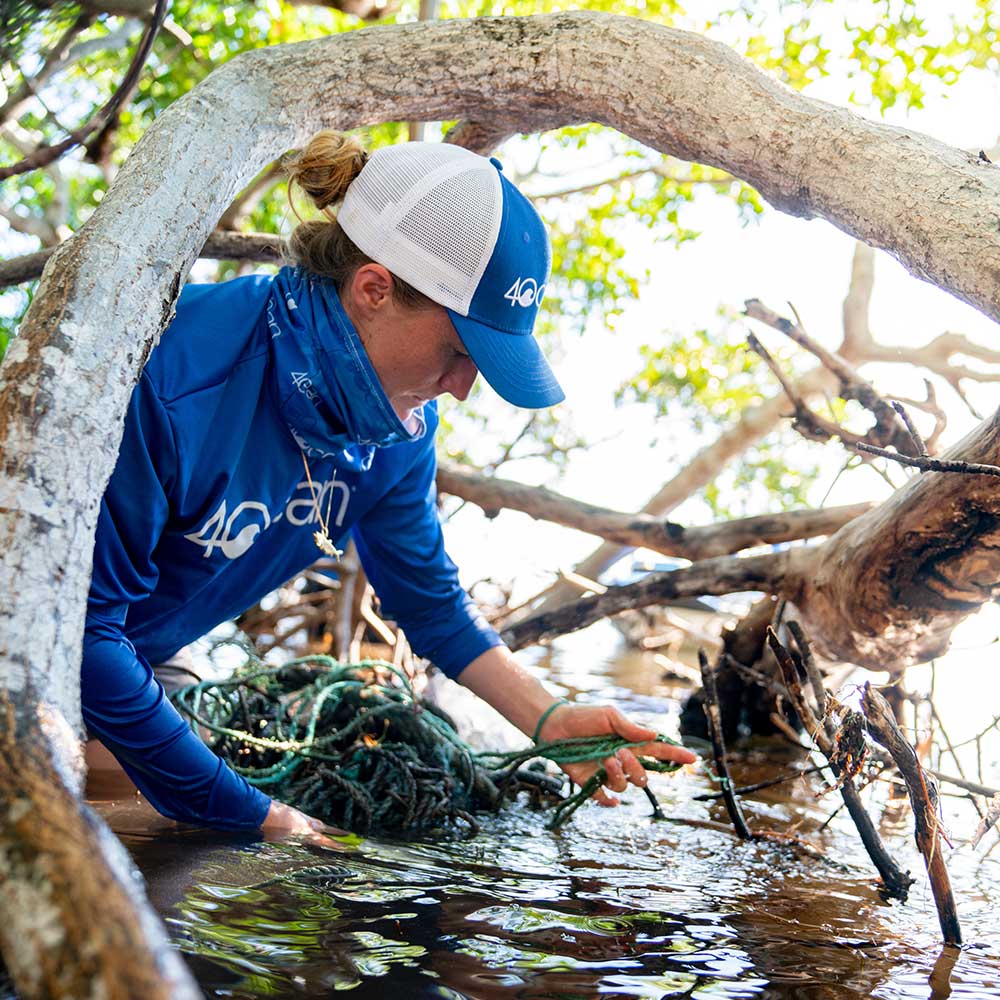
Maximize your impact with our Custom Ocean Cleanup Service
Help our crews recover more ghost nets! With our ocean cleanup service, you can choose how many pounds of trash you want to pull and how often. Pay just $2 for every pound you pull!
- Choosing a selection results in a full page refresh.
- Opens in a new window.


